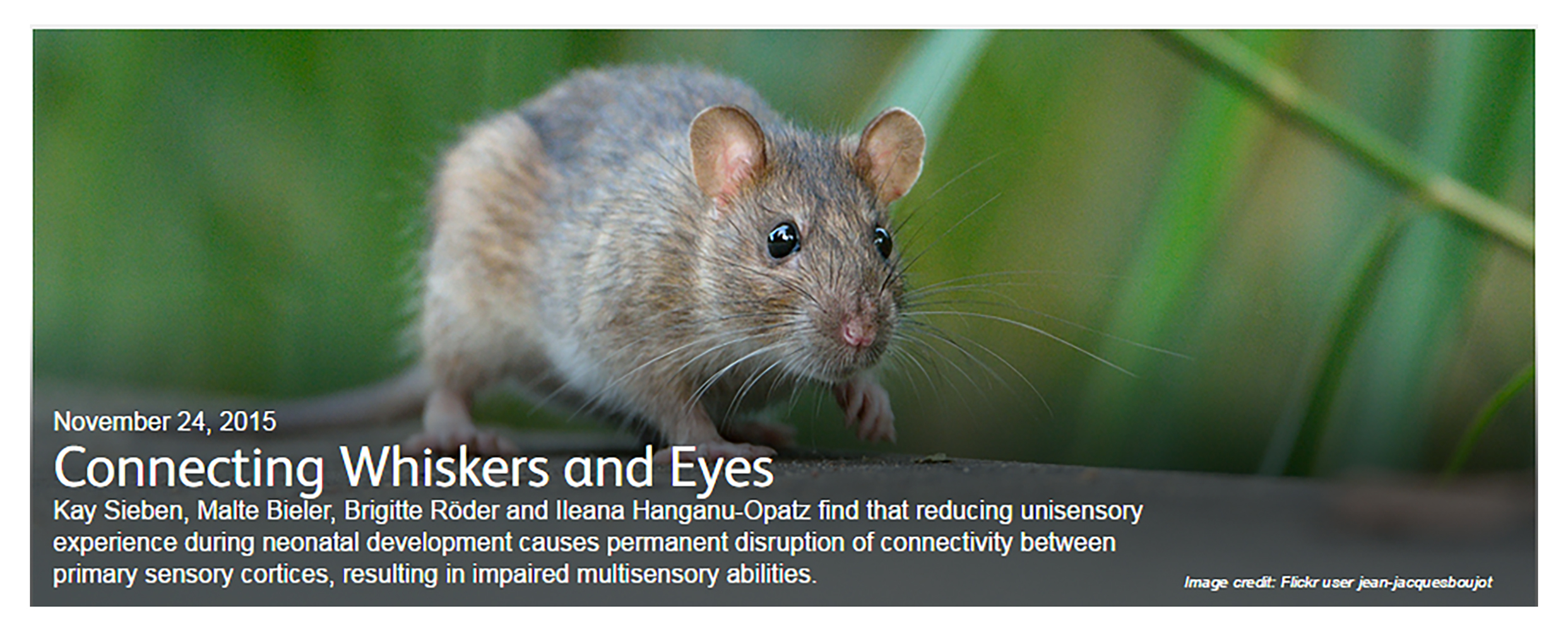
Our day-to-day life requires permanent interactions with the environment that are enabled by multiple senses. To obtain a unified percept of the world, these diverse sensory inputs need to be bound together within distributed but strongly interconnected neuronal networks. We investigate the mechanisms, ontogeny and behavioral relevance of multisensory processing.
Key publications
Xu, X., Hanganu-Opatz, I., & Bieler, M. (2020). Cross-Talk of Low-Level Sensory and High-Level Cognitive Processing: Development, Mechanisms, and Relevance for Cross-Modal Abilities of the Brain. Frontiers in Neurorobotics 14, 7.
Bieler, M., Sieben, K., Cichon, N., Schildt, S., Röder, B., Hanganu-Opatz, I. (2017). Rate and temporal coding convey multisensory information in primary sensory cortices. eNeuro, 4(2), e0037-17.2017, 1–18.
Bieler, M., Sieben, K., Schildt, S., Röder, B., & Hanganu-Opatz, I. (2017). Visual-tactile processing in primary somatosensory cortex emerges before cross-modal experience. Synapse, 71(6), 1-13.
Sieben, K., Bieler, M., Röder, B., Hanganu-Opatz, I.L. (2015) Neonatal Restriction of Tactile Inputs Leads to Long-Lasting Impairments of Cross-Modal Processing. PLoS Biol 13(11):e1002304.
Sieben, K., Röder, B., Hanganu-Opatz, I.L. (2013) Oscillatory entrainment of primary somatosensory cortex encodes visual control of tactile processing. J Neurosci 33: 5736-49.